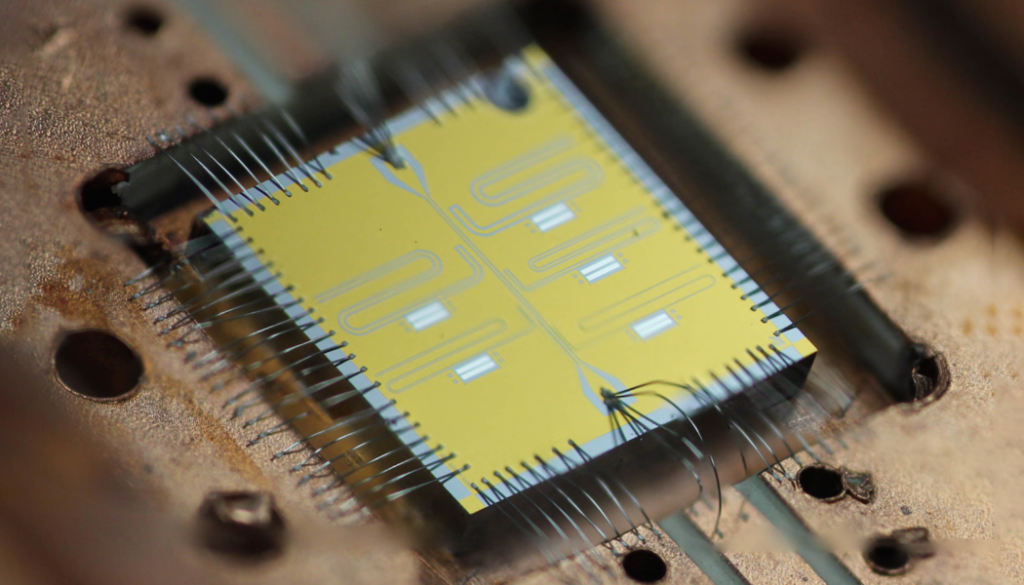Two Students Just Broke a Quantum Computing World Record
TECHNOLOGY, 10 Jul 2017
Tom Ward | Futurism – TRANSCEND Media Service
Researchers from Sweden have successfully simulated a 45-qubit quantum circuit, breaking the record for the greatest number of qubits to be simulated. This important milestone puts humanity one step closer to “quantum supremacy,” the point at which quantum computers could outperform any traditional computer.
5 Jul 2017 – Two Ph.D. students from the Swiss Federal Institute of Technology (ETH Zurich) have successfully simulated a 45-qubit quantum circuit, inching us closer to quantum supremacy — the point at which quantum computers could outperform any extant classical computer, estimated to require 49 qubits.
Click HERE to View Full Infographic
Thomas Häner and Damien Steiger also successfully simulated 30-, 36- and 42-qubit quantum circuits during their time at the National Energy Research Scientific Computing Center (NERSC) at the Lawrence Berkeley National Laboratory.
The students used 8,192 of the 9,688 Intel Xeon Phi processors on Cori, NERSC’s newest supercomputer, for the largest of their simulations. Unfortunately, they could not run an even larger simulation using all of the supercomputer’s nodes as that would risk the system collapsing.
The Quantum Revolution
Quantum computing has the potential to revolutionize the entire world by increasing the processing power of computers by orders of magnitude. However, two questions have thus far stumped quantum computer creators: how to create machines with sufficient processing power and how to scale those machines for mass production.
Supermaterials like graphene have been suggested as an answer to the first problem, but researchers will want to calibrate and optimize their designs before sinking precious money and time into their endeavors. That’s where simulations become essential, according to a paper Häner and Steiger presented at SC16:
While large-scale quantum computers are not yet available, their performance can be inferred using quantum compilation frameworks and estimates of potential hardware specifications. However, without testing and debugging quantum programs on small scale problems, their correctness cannot be taken for granted. Simulators and emulators … are essential to address this need.
The potential uses for quantum computers once they are developed are seemingly infinite. While most center on complex data analysis, which classical computers can only perform very slowly or not at all, others have considered even more innovative uses for quantum systems.
httpv://www.youtube.com/watch?v=JhHMJCUmq28
Kindred has hypothesized that a robotic exoskeleton capable of managing the work of four people could be powered using a quantum computer. A molecule has been modeled successfully using one, paving the way to computing entire chemical systems, and Google has considered using quantum computing to enable their autonomous vehicle to distinguish cars from other objects more effectively.
Truly, the era of the quantum computer is just on the horizon, and once we reach it, every computer system we use will have the potential to become faster and more powerful.
DISCLAIMER: The statements, views and opinions expressed in pieces republished here are solely those of the authors and do not necessarily represent those of TMS. In accordance with title 17 U.S.C. section 107, this material is distributed without profit to those who have expressed a prior interest in receiving the included information for research and educational purposes. TMS has no affiliation whatsoever with the originator of this article nor is TMS endorsed or sponsored by the originator. “GO TO ORIGINAL” links are provided as a convenience to our readers and allow for verification of authenticity. However, as originating pages are often updated by their originating host sites, the versions posted may not match the versions our readers view when clicking the “GO TO ORIGINAL” links. This site contains copyrighted material the use of which has not always been specifically authorized by the copyright owner. We are making such material available in our efforts to advance understanding of environmental, political, human rights, economic, democracy, scientific, and social justice issues, etc. We believe this constitutes a ‘fair use’ of any such copyrighted material as provided for in section 107 of the US Copyright Law. In accordance with Title 17 U.S.C. Section 107, the material on this site is distributed without profit to those who have expressed a prior interest in receiving the included information for research and educational purposes. For more information go to: http://www.law.cornell.edu/uscode/17/107.shtml. If you wish to use copyrighted material from this site for purposes of your own that go beyond ‘fair use’, you must obtain permission from the copyright owner.

